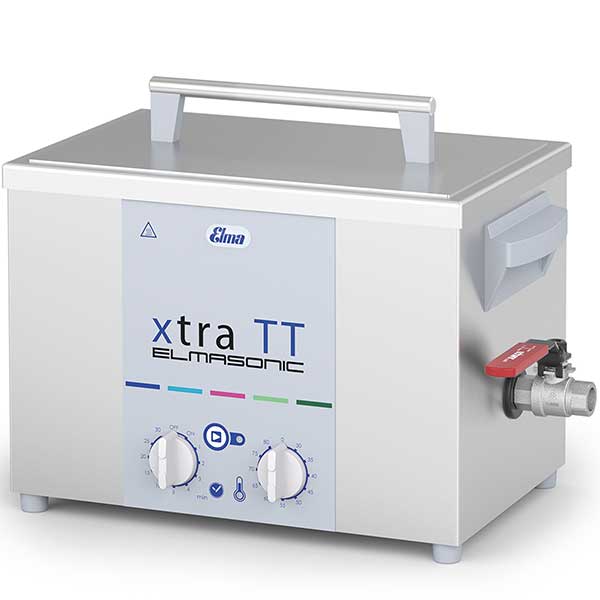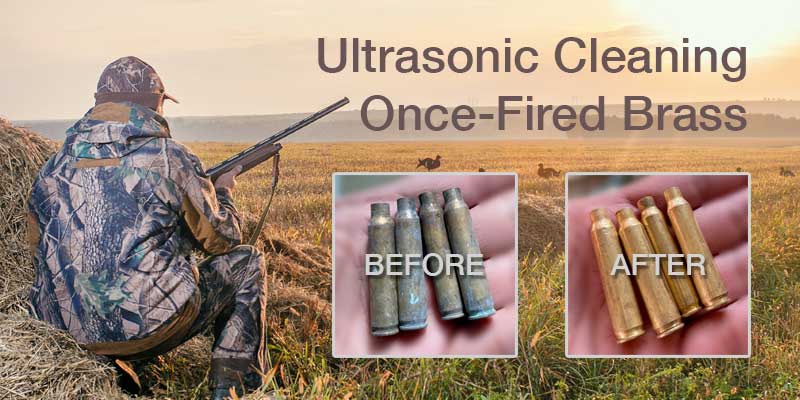
Ultrasonic Cleaning Once-Fired Brass
A Tovatech Case Study
A recent report by IBISWorld states that the U.S. Shooting Range Industry market is estimated at $4 billion and encompasses more than 11,000 businesses. Many shooting enthusiasts, whether pistol or rifle, save on the cost of purchasing new ammo by cleaning and reloading spent cartridges, called once-fired brass. Here we describe how a professional employs an ultrasonic cleaner to restore some 250 pistol casings a week and 200 rifle casings a month.
Cleaning Once-Fired Brass
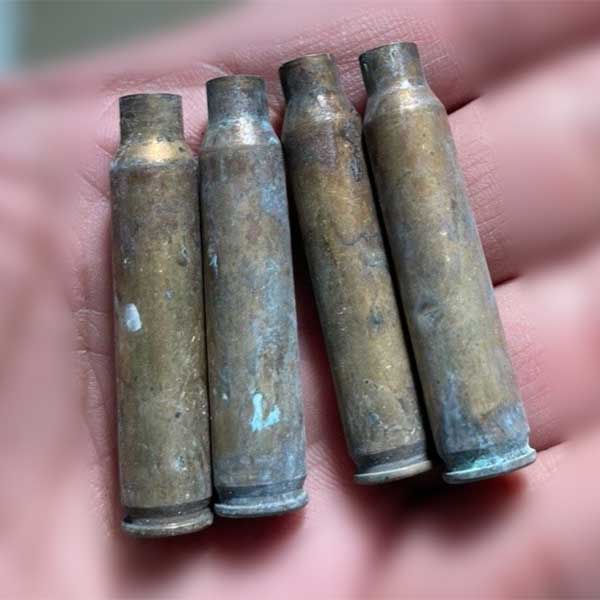
Seattle resident Subhro Kar is a Product Security Engineer for Red Hat Software and volunteers as a search and rescue pilot. Hobbies include photography, hunting and participation in precision shooting competitions. He shares with Tovatech his recommendations on employing ultrasonic energy to clean once-fired brass.
Tovatech: What led you to investigate then adopt cleaning and reloading once-fired brass?
Mr. Kar: I do this for loading my own rounds. For me, consistency is everything. Once a brass cartridge has been fired, it must be cleaned in such a way that it can be reloaded and have consistent tolerance for what is called neck tension. In other words, a reloaded cartridge should be indistinguishable from a brand new cartridge.
Tovatech: Did you employ other methods before adopting ultrasonic cleaning?
Mr. Kar: Earlier I used stainless steel media in a dish soap and citric acid solution to clean brass in a rotary tumbler.
While this is a great cleaning method I found that the media weakens brass by leaching zinc and removing chamfer.
In looking for a better method I ran across a Tovatech blog post on using an ultrasonic cleaner to clean once-fired brass.
Step-By- Step Ultrasonic Cleaning Once-Fired Brass
Tovatech: Please describe in as much detail as you wish your cleaning process.
Mr. Kar: My process starts with collecting cartridge shells as soon as practicable after being fired.
The first step is to de-cap the cartridges using a press dedicated for this purpose.
Shell casings are put on a metal sieve for washing under the tap to remove loose dirt.
After the wash, I inspect the cartridges and discard those with dents, deformations and cracks. Those that pass inspection are ready for the ultrasonic cleaning cycle.
The Ultrasonic Cleaning Cycle
The Equipment
Mr. Kar uses an 0.79 gallon Elmasonic xtra TT30H industrial ultrasonic cleaner in combination with a beaker kit accessory to clean his once-fired brass.
The 37 kHz Elma xtra TT30H cleaners are equipped with a heater, a permanent sweep mode to ensure uniform cleaning action, a timer and a pulse mode to degas fresh solutions or provide a 20% increase in power to remove tenacious contaminants.
The kit consists of two 1,000 ml beakers, lids, a beaker supporting tank cover that fits over the cleaner, and rubber positioning rings that support the beakers at the proper position in the tank. Two fine-mesh baskets sized to fit in the beakers are used to hold the shells.
The Cleaning Cycle
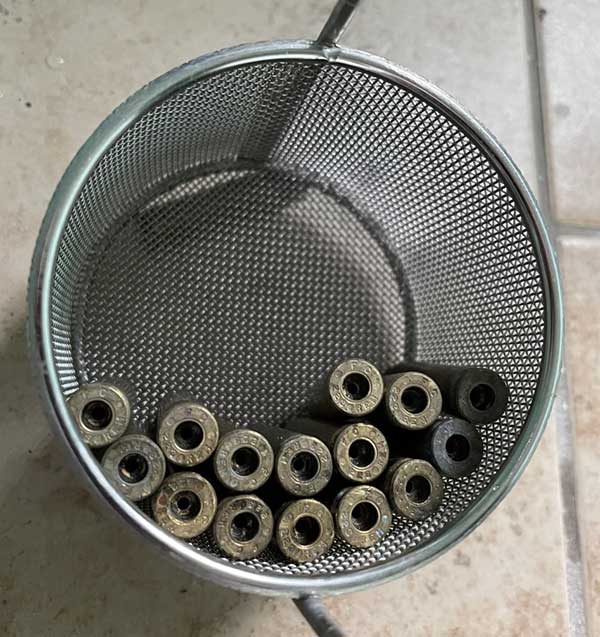
Mr. Kar: The xtra TT30H ultrasonic cleaner is filled with tap water. A few drops of Propan-2-ol (rubbing alcohol) is added to break surface tension and achieve better propagation of sound waves.
For the cleaning solution, I use elma tec clean A2 at the recommended dilution to 10 percent in distilled water. This formula, in addition to removing contaminants, brightens brass shells due to its ammonia content.
Cartridge shells are positioned in the mesh baskets with the projectile opening facing down. (Because the primer cap is removed, the cleaning solution fills the inside of the shell.) Baskets are slid into the beakers, and the diluted elma tec clean A2 cleaning solution added. Typically I load about 50-52, 9mm casings in a single basket.
Beakers are lowered into the ultrasonic cleaner tank, supported by the tray approximately an inch above the tank bottom.
Ultrasonic cleaning energy penetrates the glass walls of the beakers to clean the shells.
I run a single cycle at 35⁰C for 15 minutes. Cleaning parameters are based on experimentation where I adjusted temperatures up to 55⁰ C from 25C⁰ in 5⁰C increments.
The brass discolored above 35⁰C; moreover I did not detect cleaning improvements above that temperature. I found that the permanent Sweep mode improves cleaning primer pockets for small caliber rifles and straight-walled cartridges.
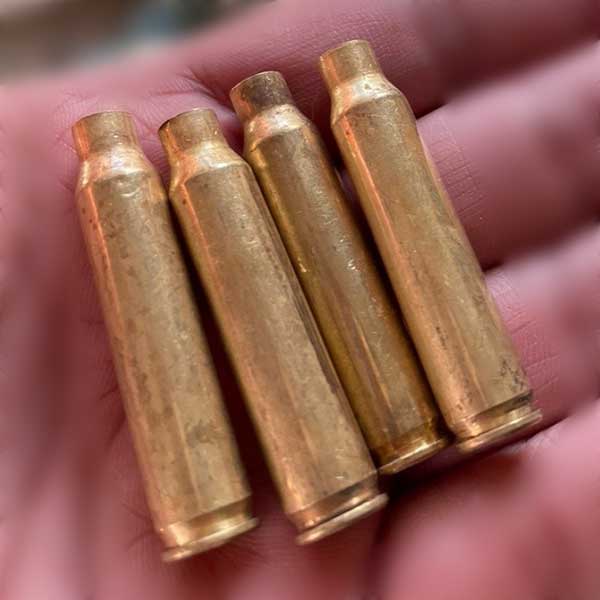
Typically I get about 500, 9mm shell cases cleaned from 500 ml of elma tec clean A2 solution. Other cases cleaned include 45 ACP, .460 Rowland, 223 Remington, 6.5 PRC, 7mm Remington UltraMagnum, 338 Lapua Magnums, and 300 Norma Magnums.
The Post-Cleaning Cycle
Following the ultrasonic bath, casings are washed in tap water and thoroughly inspected before being placed in the a case dryer. I use a Frankford Arsenal case dryer and run it for 90 minutes when all racks are loaded.
Tovatech thanks Subhro Kar for graciously providing information on how he uses ultrasonic energy to clean and restore once-fired brass. We offer these additional suggestions.
Maintaining Ultrasonic Cleaning Efficiency
Contaminants removed when cleaning any product in an ultrasonic cleaner have to go somewhere. Depending on the cleaning solution formula, oils rise to the top (demulsifying chemistries) and should be skimmed off and stored separately, or are emulsified in the solution. In either case hard particle contaminants fall to the bottom where vibration can damage the tank.
For more on this see the cleaning solution maintenance comments in this post on ultrasonic cleaning solutions.
When cleaning efficiency drops off the tank should be drained. Dispose spent solution and skimmed contaminants according to local regulations Clean the tank as directed in the user manual.
Fill the tank with fresh solution. Degas it using a degas mode, a pulse mode or operate the unit without a load for a short period of time. This both mixes the solution and removes cavitation-inhibiting trapped air.
For further information see our post on ultrasonic cleaners and how they work.
For unbiased help in selecting an ultrasonic cleaner that meets your needs, contact the Tovatech professionals.

